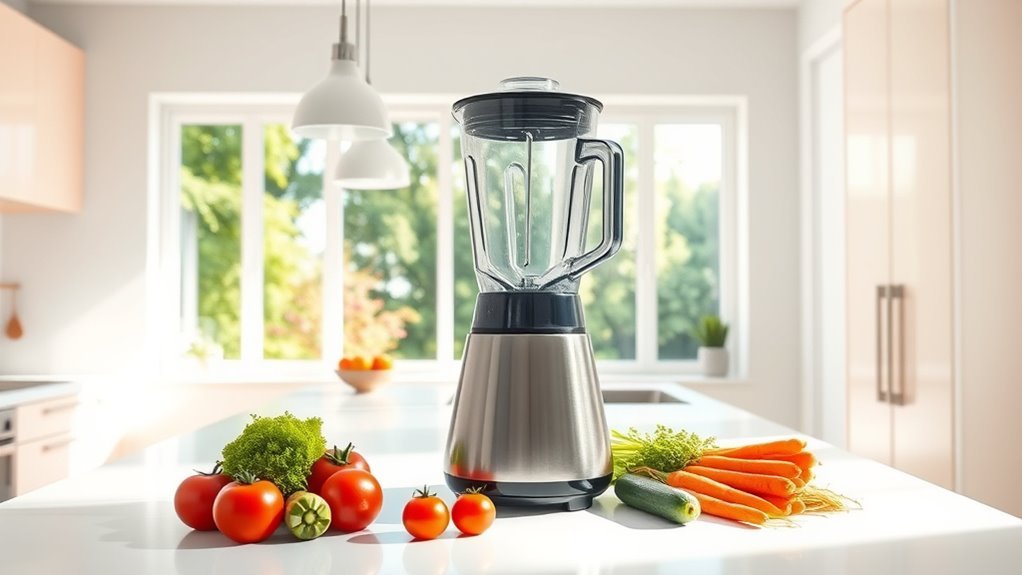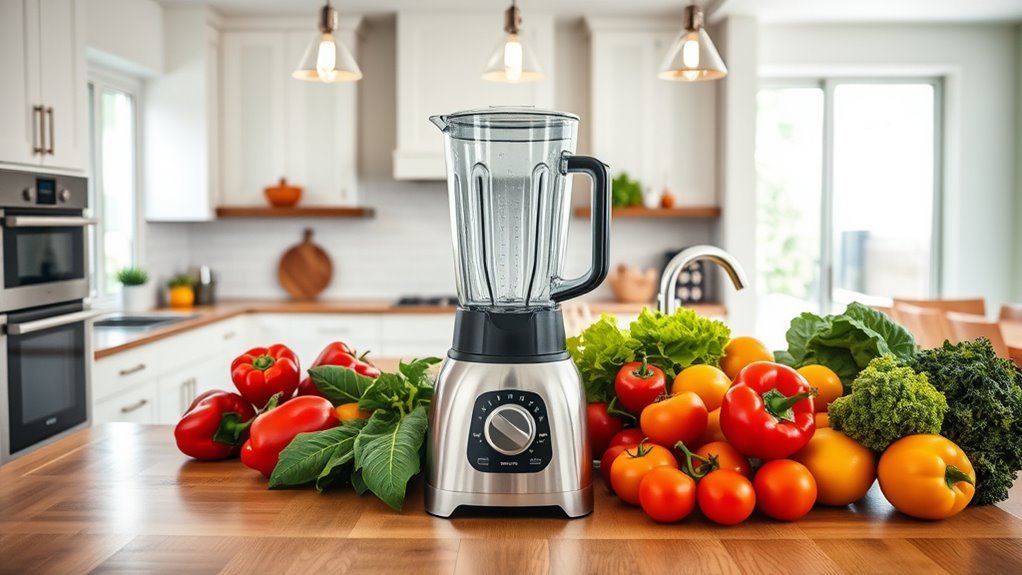We’ll help you achieve perfectly uniform chopping with these essential pulsing tips. Start with 1-2 second pulses, adjusting duration based on ingredient hardness. Distribute items evenly, using short bursts while pausing to redistribute with a spatula. Maintain steady pressure and avoid overstuffing your feed tube. Time your intervals with 2-3 second pauses between pulses to prevent mushiness. Master these fundamentals, and restaurant-quality results await.
Understanding the Power of Pulsing

When it comes to achieving perfectly uniform chopping results, there’s nothing quite as powerful as mastering the pulse function.
Let’s explore why this technique is a game-changer for your food processor skills.
We’ve found that pulsing gives us unprecedented control over our ingredients’ size and texture, preventing that dreaded mushy outcome. By hitting the pulse button in short bursts, we’re able to distribute ingredients uniformly throughout the food processor, ensuring every piece gets equal attention.
This precision translates directly to better cooking results and greatly reduced prep time.
Think of pulsing as your secret weapon for high-quality chopping. Instead of mindlessly running the processor, we’re strategically controlling each burst, checking consistency between pulses, and achieving exactly the texture we want – every single time. Additionally, using a high-performance blender can further enhance your chopping and blending experience, allowing for even smoother textures in your final dish.
Mastering the Pulse Duration
The perfect pulse duration makes all the difference between precisely chopped ingredients and an unappetizing mush. Let’s nail down the timing for ideal uniformity when using your food processor’s pulse button.
Start with 1-2 second pulses to assess your ingredients, then adjust based on what you see. We’re aiming for controlled chopping that brings all food in place for even cutting.
| Ingredient Type | Pulse Duration | Typical Pulses Needed |
|---|---|---|
| Soft Vegetables | 1 second | 5-6 pulses |
| Medium Herbs | 1-2 seconds | 6-8 pulses |
| Hard Vegetables | 2 seconds | 8-10 pulses |
| Nuts/Seeds | 1-2 seconds | 4-6 pulses |
Monitor closely – this technique requires attention, but you’ll master the timing with practice. Using a high-performance blender can also enhance your chopping and blending efficiency, making meal prep quicker and more enjoyable.
Distributing Ingredients for Even Results

Successful chopping demands strategic ingredient placement in your food processor bowl.
Let’s leverage pulsing techniques to guarantee ingredients are evenly distributed throughout, delivering that perfect uniform chop we’re after.
Start by pulsing in short, controlled bursts, which redistributes ingredients toward the blades for consistent chopping results.
We’ll want to pause regularly to check the consistency – this isn’t a race. When you spot uneven pieces, grab your spatula and give everything a quick stir. This brings larger chunks back into the blade’s path.
Remember: Smart distribution equals better results.
By alternating between pulsing and stirring, we’re creating a systematic approach that assures uniform texture.
Don’t rush it – those few extra seconds of attention make all the difference in achieving professional-grade results.
Controlling Pressure and Feed Speed
Mastering pressure control and feed speed separates amateur choppers from seasoned pros. When using a good food processor, we’ll want to apply steady, consistent pressure – think of it like keeping the tip of the knife at a controlled angle.
Monitor the texture while using the pulse function; it’s our secret weapon for precision.
We’ve learned that gradual feeding is essential for uniform results, especially with delicate vegetables. Pack the feed tube firmly but don’t overstuff – it’s like maintaining the sweet spot between too loose and too tight.
Timing Your Pulse Intervals

While chopping uniformity depends on many factors, precise pulse timing stands as the make-or-break element for perfect results.
We’ll get straight to it: stick to 1-2 second bursts for ideal control over your chopped ingredients. Always pause 2-3 seconds between pulses – this isn’t optional, it’s essential for even distribution.
Got delicate ingredients? Shorten those intervals to half-second pulses. You’ll thank us when your herbs aren’t reduced to mush.
Monitor texture obsessively – once you’ve hit your target consistency, stop. Don’t turn perfectly chopped vegetables into baby food.
Frequently Asked Questions
What Is the Rule #1 in Knife Skills?
We’ll always start with proper knife grip – it’s fundamental to food safety and precision cutting. Keep fingers protected while maintaining the right blade angle on your cutting board for controlled chopping technique.
How Do You Chop Perfectly?
We’ll achieve perfect chopping by maintaining sharp knives, using proper knife techniques, and ensuring consistent ingredient sizes. Let’s prep on clean cutting boards and practice safe, controlled chopping methods.
What Is a Common Mistake When Chopping?
We often make mistakes with uneven sizes from improper grip, over chopping, and incorrect technique. Using dull knives and lacking focus while working at the wrong angle shows insufficient practice.
How to Increase Chopping Speed?
Let’s boost our chopping speed by maintaining sharp blades, using proper knife grip techniques, preparing ingredients in uniform sizes, and utilizing food processor pulses when handling larger vegetable quantities.

